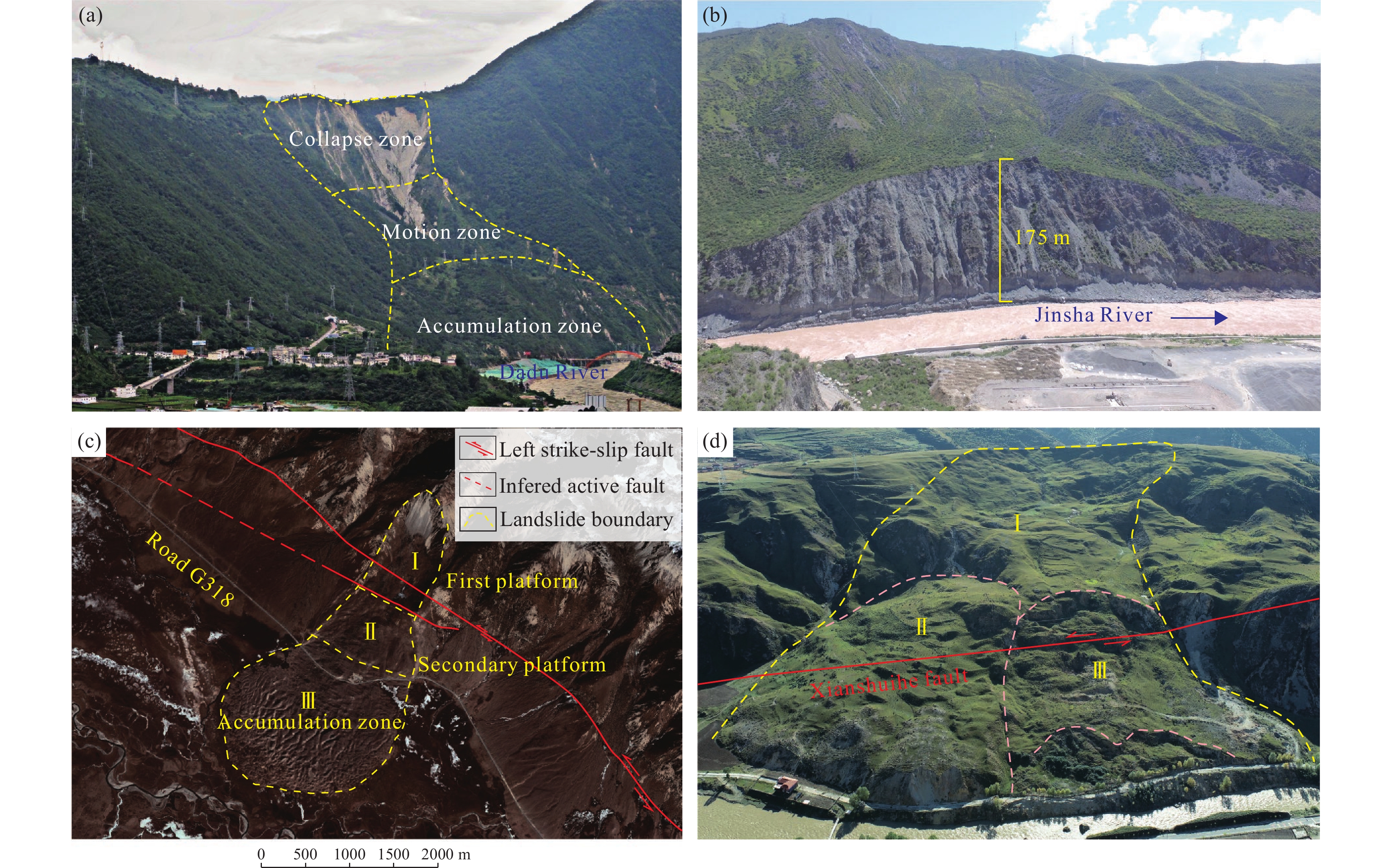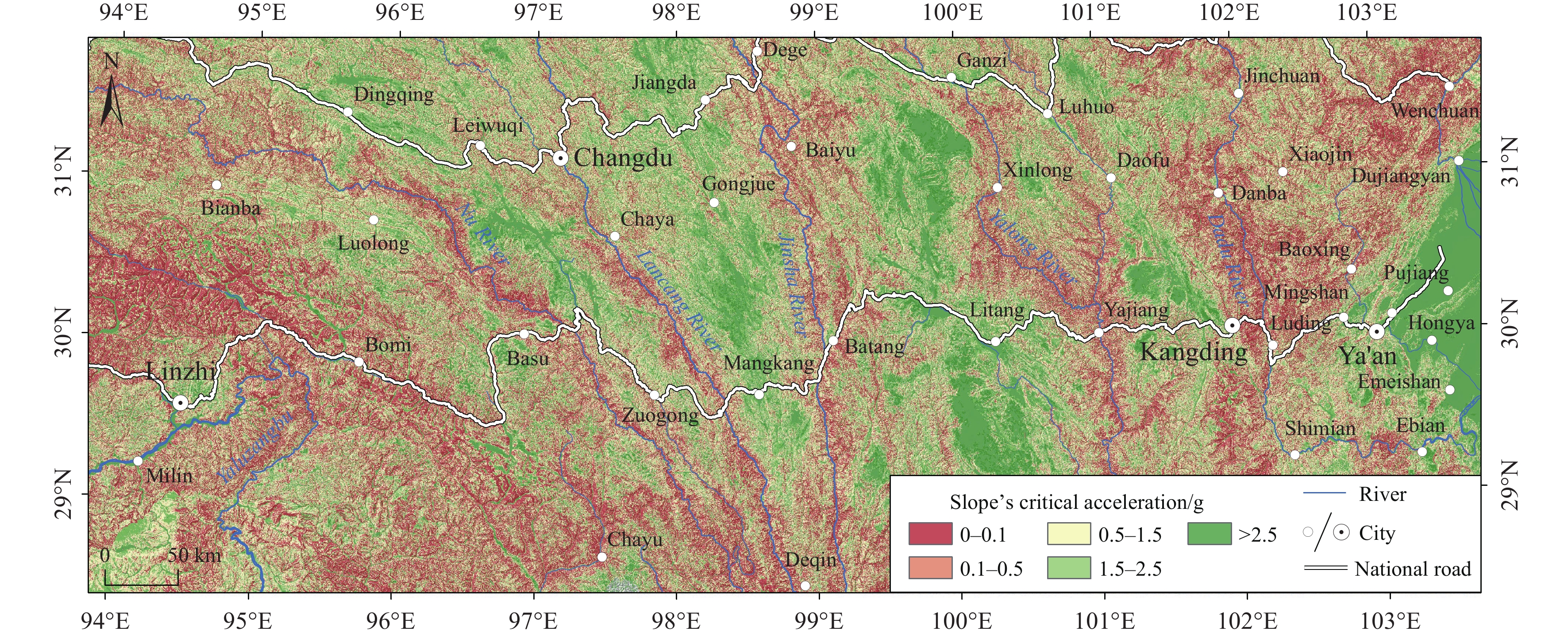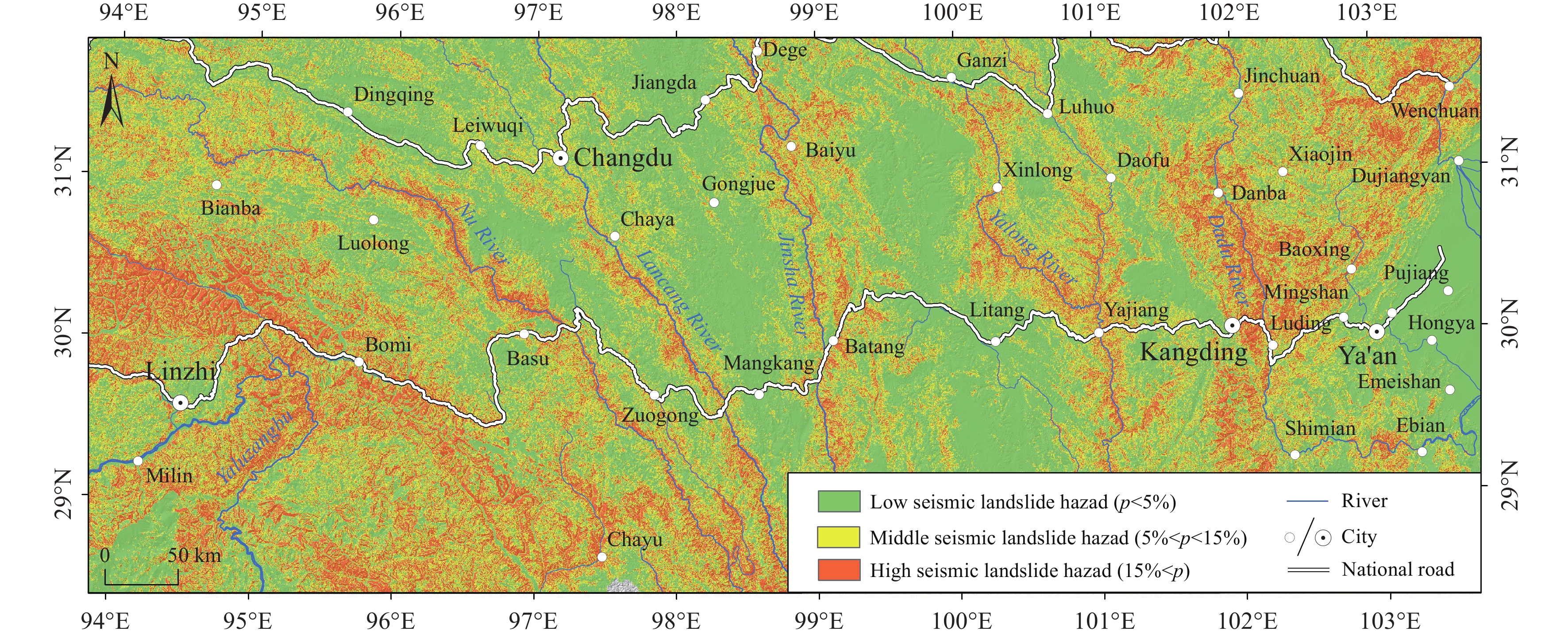| Citation: | Zhi-hua Yang, Chang-bao Guo, Rui-an Wu, Wei-wei Shao, Peng-fei Yu, Cai-hong Li, 2023. Potential seismic landslide hazard and engineering effect in the Ya’an-Linzhi section of the Sichuan-Xizang transportation corridor, China, China Geology, 6, 228-240. doi: 10.31035/cg2023032 |
Potential seismic landslide hazard and engineering effect in the Ya’an-Linzhi section of the Sichuan-Xizang transportation corridor, China
-
Abstract
The Sichuan-Xizang transportation corridor is located at the eastern margin of the Qinghai-Xizang Plateau, where the complex topography and geological conditions, developed geo-hazards have severely restricted the planning and construction of major projects. For the long-term prevention and early control of regional seismic landslides, based on analyzing seismic landslide characteristics, the Newmark model was used to carry out the potential seismic landslide hazard assessment with a 50-year beyond probability 10%. The results show that the high seismic landslide hazard is mainly distributed along large active tectonic belts and deep-cut river canyons, and are significantly affected by the active tectonics. The low seismic landslide hazard is mainly distributed in the flat terrain such as the Quaternary basins, broad river valleys, and plateau planation planes. The major east-west linear projects mainly pass through five areas with high seismic landslide hazard: Luding-Kangding section, Yajiang-Xinlong (Yalong river) section, Batang-Baiyu (Jinsha river) section, Basu (Nujiang river) section, and Bomi-Linzhi (eastern Himalaya syntaxis) section. The seismic action of the Bomi-Linzhi section can also induce high-risk geo-hazard chains such as the high-level glacial lake breaks and glacial debris flows. The early prevention of seismic landslides should be strengthened in the areas with high seismic landslide hazard.
-

-
References
Chousianitis K, Del Gaudio V, Kalogeras I, Ganas A. 2014. Predictive model of Arias intensity and Newmark displacement for regional scale evaluation of earthquake-induced landslide hazard in Greece. Soil Dynamics and Earthquake Engineering, 65, 11–29. doi: 10.1016/j.soildyn.2014.05.009. Dai FC, Xu C, Yao X, Xu L, Tu XB, Gong QM. 2011. Spatial distribution of landslides triggered by the 2008 MS 8.0 Wenchuan earthquake, China. Journal of Asian Earth Sciences, 40(4), 883–895. doi: 10.1016/j.jseaes.2010.04.010. Delaney KB, Evans SG. 2015. The 2000 Yigong landslide (Xizang Plateau), rockslide-dammed lake and outburst flood: Review, remote sensing analysis, and process modelling. Geomorphology, 246, 377–393. doi: 10.1016/j.geomorph.2015.06.020. Deng QD. 1996. Active Tectonics in China. Geological Review, 42(4), 295–299. doi: 10.16509/j.georeview.1996.04.003. Du GL, Zhang YS, Zou L, Yang ZH, Yuan Y, Ren SS. 2022. Co-seismic landslide hazard assessment of the 2017 MS 6.9 Milin earthquake, Xizang, China, combining the logistic regression–information value and Newmark displacement models. Bulletin of Engineering Geology and the Environment, 81, 446. doi: 10.1007/s10064-022-02901-x. Fan XM, Wang X, Dai LX. 2022. Characteristics and spatial distribution pattern of MS 6.8 Luding Earthquake occurred on September 5, 2022. Journal of Engineering Geology, 30(5), 1504-1516 (in Chinse with English abstract). doi: 10.13544/j.cnki.jeg.2022-0665. Guo CB, Zhang YS, Montgomery DR, Du YB, Zhang GZ, Wang SF. 2016. How unusual is the long-runout of the earthquake-triggered giant Luanshibao landslide, Xizang Plateau, China? Geomorphology, 259, 145–154. doi: 10.1016/j.geomorph.2016.02.013. Guo CB, Montgomery DR, Zhang YS, Zhong N, Fan C, Wu RA, Yang ZH, Ding YY, Jin JJ, Yan YQ. 2020. Evidence for repeated failure of the giant Yigong landslide on the edge of the Xizang Plateau. Scientific Reports, 10, 14371. doi: 10.1038/s41598-020-71335-w. Hua JX, Zheng JG, Wang DL. 2018. Engineering Geology Handbook (Fifth edition) of China. China Architecture and Building Press, Beijing (in Chinese). Huang YD, Xie CC, Li T, Xu C, He XL, Shao XY, Xu XW, Zhan T, Chen ZN. 2022. An open-accessed inventory of landslides triggered by the MS 6.8 Luding earthquake, China on September 5, 2022. Earthquake Research Advances, 3(1), 100181. doi: 10.1016/j.eqrea.2022.100181. Jibson RW. 1993. Predicting earthquake-induced landslide displacements using Newmark's sliding block analysis. Transportation Research Record, 1411, 9–17. Jibson RW, Harp EL, Michael JA. 2000. A method for producing digital probabilistic seismic landslide hazard maps. Engineering Geology, 58(3–4), 271–289. doi: 10.1016/S0013-7952(00)00039-9. Jibson RW. 2007. Regression models for estimating coseismic landslide displacement. Engineering Geology, 91(2–3), 209–218. doi: 10.1016/j.enggeo.2007.01.013. Kamp U, Growley BJ, Khattak GA, Owen LA. 2008. GIS based landslide susceptibility mapping for the 2005 Kashmir earthquake region. Geomorphology, 101(4), 631–642. doi: 10.16738/j.cnki.issn.1003-3238.2012.04.007. Lee S, Evangelista DG. 2006. Earthquake-induced landslide-susceptibility mapping using an artificial neural network. Natural Hazards and Earth System Science, 6(5), 687–695. doi: 10.5194/nhess-6-687-2006,2006. Li MH, Wang DH, Gao YC, Bai YJ. 2014. Research on the Geohazards Induced by the M7. 9 Luhuo Earthquake in Xianshuihe Fault Zone. Journal of Catastrophology, 29(1), 37–41. Li C, Su LJ. 2021. Influence of critical acceleration model on assessments of potential earthquake–induced landslide hazards in Shimian County, Sichuan Province, China. Landslides, 18(5), 1659–1674. doi: 10.1007/s10346-020-01578-1. Meng W, Guo CB, Zhang YS, Du YB, Zhang M, Bao LH, Zhang P. 2022. In situ stress measurements in the Lhasa terrane, Xizang Plateau, China. Acta Geologica Sinica (English Edition), 90(6), 2022–2035. doi: 10.1111/1755-6724.13019. Miles SB, Ho CL. 1999. Rigorous landslide hazard zonation using Newmark’s method and stochastic ground motion simulation. Soil Dynamics and Earthquake Engineering, 18, 305–323. doi: 10.1016/S0267-7261(98)00048-7. Nefeslioglu HA, Duman TY, Durmaz S. 2006. Landslide susceptibility mapping for a part of tectonic Kelkit Valley (Eastern Black Sea region of Turkey). Geomorphology, 94(3–4), 401–418. doi: 10.1016/j.geomorph.2006.10.036. Newmark NM. 1965. Effects of earthquakes on dams and embankments. Geotechnique, 15(2), 139–160. doi: 10.1680/geot.1965.15.2.139. Nowicki MA, Wald DJ, Hamburger MW, Hearne M, Thompson EM. 2014. Development of a globally applicable model for near real-time prediction of seismically induced landslides. Engineering Geology, 173, 54–65. doi: 10.1016/j.enggeo.2014.02.002. Peng C, Yin ZQ, Zhang XJ, Shao H, Pang MF. 2021. A comparative study of the main factors controlling geohazards induced by seismic events in Western China since the Wenchuan earthquake. China Geology, 5, 1–15. doi: 10.31035/cg2022009. Roberto R. 2000. Seismically induced landslide displacements: a predictive model. Engineering Geology, 58(3–4), 337–351. doi: 10.1016/S0013-7952(00)00042-9. Shao XY, Xu C, Ma SY. 2022. Preliminary Analysis of Coseismic Landslides Induced by the 1 June 2022 MS 6.1 Lushan Earthquake, China. Sustainability, 14(24), 16554. doi: 10.3390/su142416554. Song YQ, Gong JH, Gao S, Wang DC, Cui TJ, Li Y, Wei BQ. 2012. Susceptibility assessment of earthquake-induced landslides using Bayesian network: A case study in Beichuan, China. Computers & Geosciences, 42, 189–199. doi: 10.1016/j.cageo.2011.09.011. Tang HM, Liu X, Hu XL, Griffiths DV. 2015. Evaluation of landslide mechanisms characterized by high-speed mass ejection and long-run-out based on events following the Wenchuan earthquake. Engineering Geology, 194, 12–24. doi: 10.1016/j.enggeo.2015.01.004. Tapponnier P, Molnar P. 1977. Active faulting and tectonics in China. Journal of Geophysical Research, 82, 2905–2930. doi: 10.1029/JB082i020p02905. The Ministry of Construction of the People’s Republic of China. 2010. National Standard of the People's Republic of China “Code for Seismic Design of Buildings” (GB 50011-2010). China Architecture and Building Press, Beijing (in Chinese). Wang T, Wu SR, Shi JS, Xin P. 2013. Application and Validation of Seismic Landslide Displacement Analysis Based on Newmark Model: A Case Study in Wenchuan Earthquake. Acta Geologica Sinica (English Edition), 87(supp.), 393–397. Wang T, Wu SR, Shi JS, Xin P, Wu LZ. 2018. Assessment of the effects of historical strong earthquakes on large-scale landslide groupings in the Wei River midstream. Engineering Geology, 235, 11–19. doi: 10.1016/j.enggeo.2018.01.020. Wilson RC, Keefer DK. 1983. Dynamic analysis of a slope failure from the 6 August 1979 Coyote lake, California, earthquake. Bulletin of Engineering Geology and the Environment, 73(3), 863–877. doi: 10.1016/0040-1951(84)90122-7. Wu RA, Zhang YS, Guo CB, Yang ZH, Su FR, Tang J. 2020. Landslide susceptibility assessment in mountainous area: a case study of Sichuan-Xizang railway, China. Environmental Earth Sciences, 79, 157. doi: 10.1007/s12665-020-8878-8. Xu C, Dai FC, Xu XW, Lee YH. 2012. GIS-based support vector machine modeling of earthquake-triggered landslide susceptibility in the Jianjiang River watershed, China. Geomorphology, 145–146, 70–80. doi: 10.1016/j.geomorph.2011.12.040. Yang ZH, Lan HX, Gao X, Li LP, Meng YS, Wu YM. 2015. Urgent Landslide Susceptibility Assessment in the 2013 Lushan Earthquake-impacted Area, Sichuan Province, China. Natural Hazards, 75(3), 2467–2487. doi: 10.1007/s11069-014-1441-8. Yin YP, Zheng WM, Li XC, Sun P, Li B. 2011. Catastrophic landslides associated with the MS 8. 0 Wenchuan earthquake. Bulletin of Engineering Geology and the Environment, 70(1), 15–32. doi: 10.1007/s10064-010-0334-7. Yin YP. 2014. Vertical acceleration effect on landsides triggered by the Wenchuan earthquake, China. Environmental Earth Sciences, 71, 4703–4714. doi: 10.1007/s12665-013-2860-7. Zhang YS, Dong SW, Hou CT, Guo CB, Yao X, Li B, Du JJ, Zhang JG. 2013. Geohazards induced by the Lushan MS 7.0 earthquake in Sichuan Province, Southwest China: typical examples, types and distributional characteristics. Acta Geologica Sinica (English Edition), 87(3), 646–657. doi: 10.1111/1755-6724.12076. Zhang YS, Yang ZH, Guo CB, Wang T, Wang DH, Du GL. 2017. Predicting landslide scenes under potential earthquake scenarios in the Xianshuihe fault zone, Southwest China. Journal of Mountain Science, 14(7), 1262–1278. doi: 10.1007/s11629-017-4363-6. Zhao B, Wang YS, Wu JF, Su LJ, Liu JW, Jin G. 2021. The Mogangling giant landslide triggered by the 1786 Moxi M 7.75 earthquake, China. Natural Hazards, 106, 459–485. doi: 10.1007/s11069-020-04471-1. Zhu SB, Shi YL. 2005. Genetic Algorithm-Finite Element Inversion of Topographic Spreading Forces and Drag Forces of Lower Crust to Upper Crust in Xizang Platea. Acta Scientiarum Naturalium Universitatis Pekinensis, 41(2), 225–234. doi: 10.13209/j.0479-8023.2005.030. -
Access History

-
Figure 1.
Geological settings of the Sichuan-Xizang transportation corridor (the simplified geological data comes from the regional geological maps with 1∶200000 scale).1–Quaternary alluvium, moraine, etc.; 2–terrestrial clastic rocks, marine clastic rocks and volcanic rocks; 3–terrestrial clastic rocks, marine sedimentary rocks in the South Xizang (sand-shale mixed with marl); 4–marine sand slate mixed with limestone, sand-shale, conglomerate and volcanic rocks; 5–Mesozoic stratification; 6–Gondwana facies (limestone, sand-slate mixed with basalt and phyllite); 7–mixed stratum; 8–Gondwana facies (sand-shale, marble and limestone); 9–molarite of middle-upper Devonian; 10–mixed stratum of upper Paleozoic; 11–Pre-Devonian metamorphic sand-slate, gneiss and marble; 12–limestone mixed with phyllite, marble mixed with mafic volcanic rocks; 13–mixed stratum; 14–clastic rocks and volcanic rocks; 15–mixed stratum of lower Paleozoic; 16–Proterozoic; 17–Archean; 18–Mesozoic mixtite; 19–Himalayan granite; 20–Late Yanshanian-Himalayan granite; 21–Yanshanian granite; 22–Hualisian-Yanshanian granite; 23–Proterozoic granite; 24–diorite type; 25–ultramafic rocks; 26–alkaline rocks; 27–drainage; 28–faults.
-
Figure 2.
Active faults and historical earthquakes in the Ya’an-Linzhi section of the Sichuan-Xizang transportation corridor (the simplified faults from the regional geological maps with 1∶200000 scale and the earthquake epicenter data from the China Earthquake Administration).
-
Figure 3.
Major geo-hazard distribution in the Ya’an-Linzhi section of the Sichuan-Xizang transportation corridor.
-
Figure 4.
Seismic landslides characteristics in the Ya’an-Linzhi section of the Sichuan-Xizang transportation corridor.a–Mogangling landslide in the Luding county; b–Temi landslide in the Batang county; c–Luanshibao landslide in the Litang county; d–55 Daoban landslide in the Luhuo county.
-
Figure 5.
Landslide characteristics induced by the MS 6.8 Luding earthquake in the Sichuan province in 2022. a–Deformation and failure of the Mogangling landslide accumulation body; b–landslide and debris flow in the Yanzi gully; c–Xinhuancun landslide in the Detuo town; d–S211 crossroad landslide in the Detuo town.
-
Figure 6.
Engineering geological units in the Ya’an-Linzhi section of the Sichuan-Xizang transportation corridor.
-
Figure 7.
Slope static safety factor in the Ya’an-Linzhi section of the Sichuan-Xizang transportation corridor.
-
Figure 8.
Slope critical acceleration in the Ya’an-Linzhi section of the Sichuan-Xizang transportation corridor.
-
Figure 9.
Peak seismic ground acceleration in the Ya’an-Linzhi section of the Sichuan-Xizang transportation corridor.
-
Figure 10.
Seismic slope displacement distribution in the Ya’an-Linzhi section of the Sichuan-Xizang transportation corridor.
-
Figure 11.
Potential seismic landslide hazard in the Ya’an-Linzhi section of the Sichuan-Xizang transportation corridor.

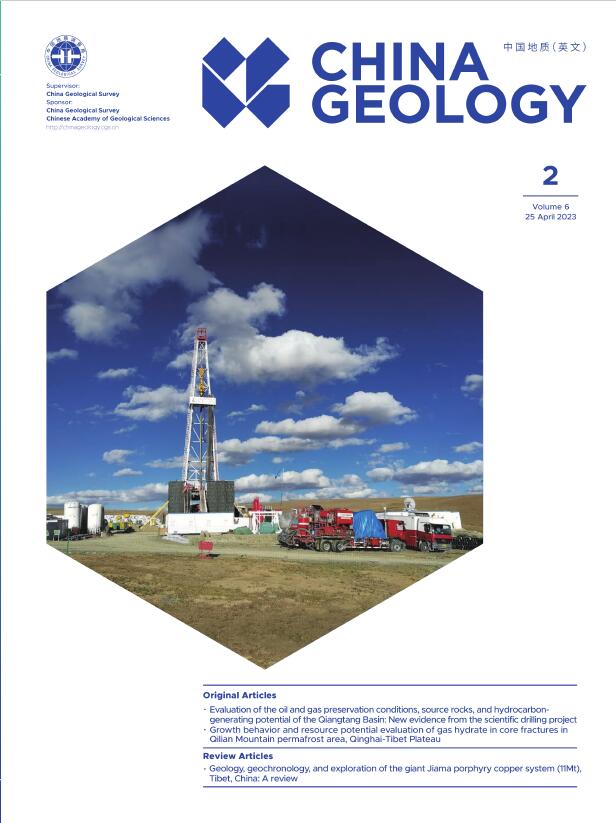

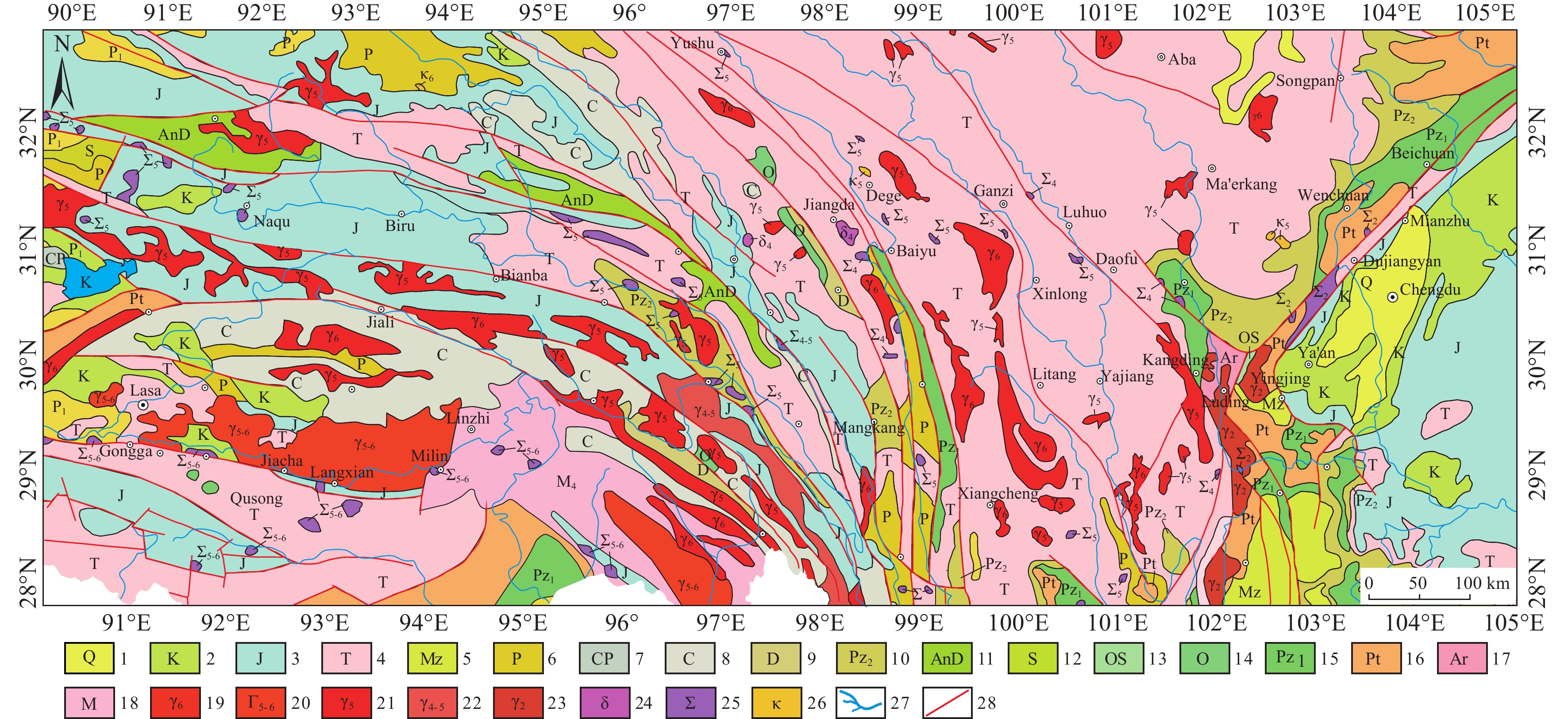

 DownLoad:
DownLoad:


